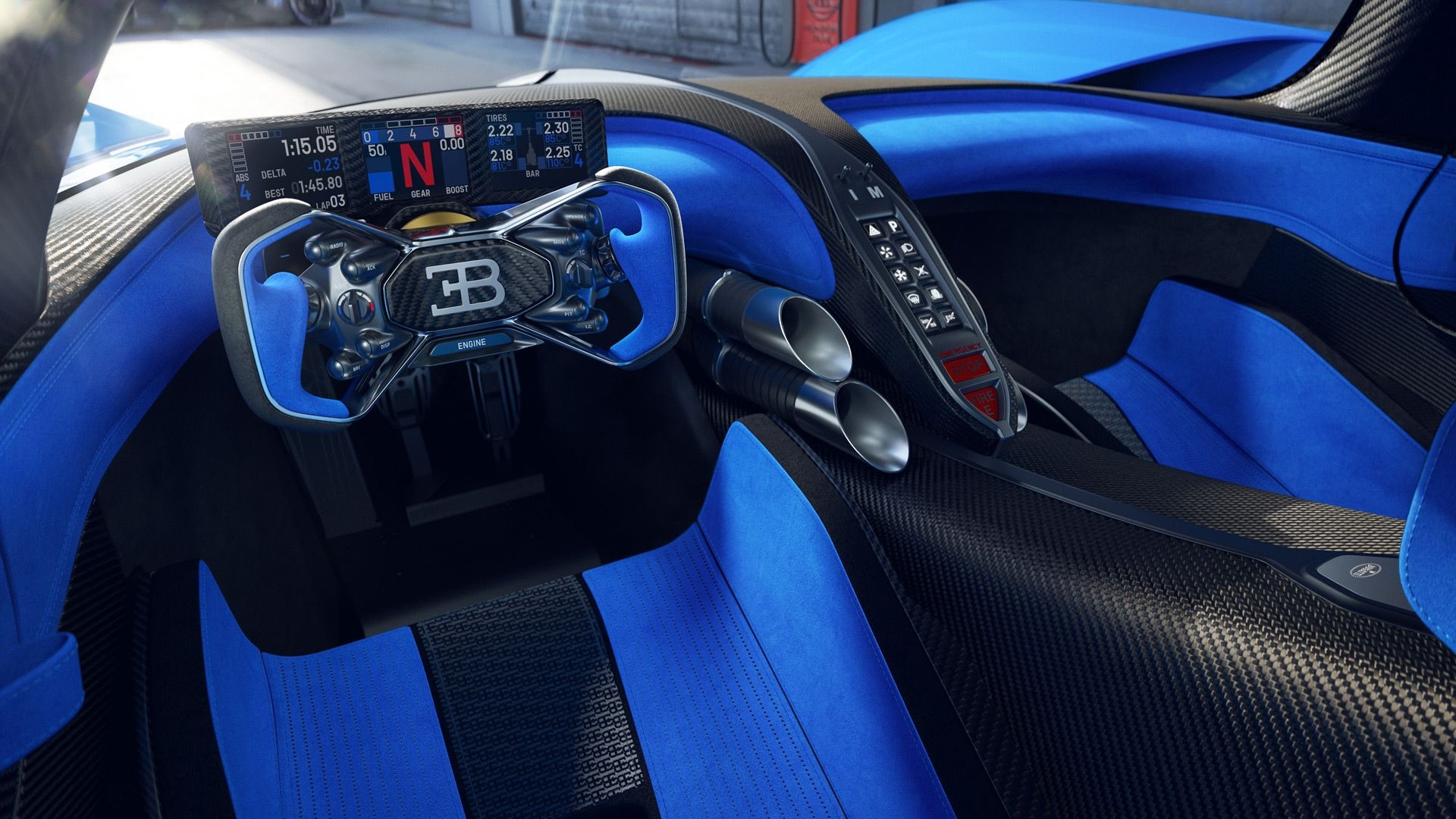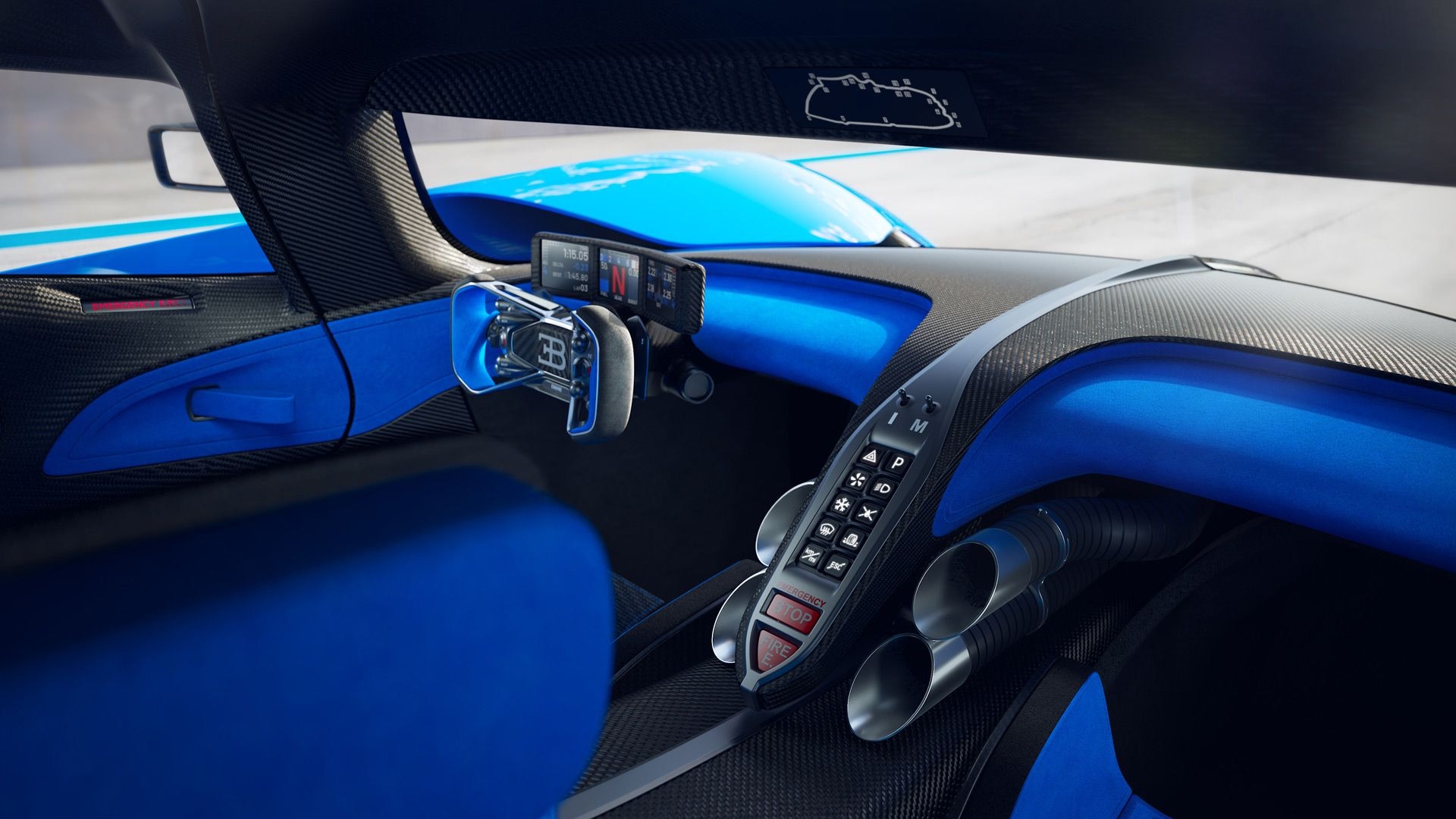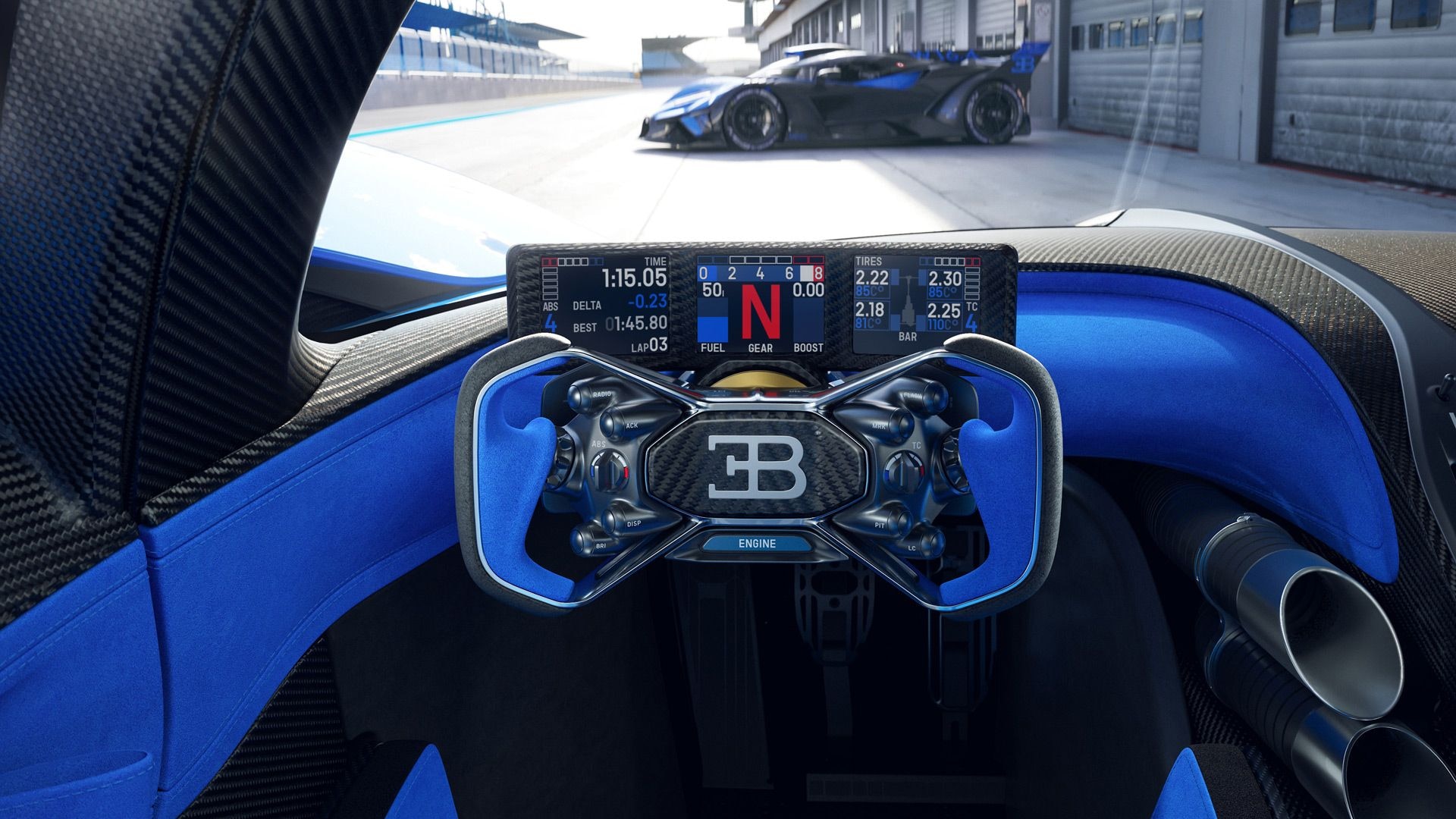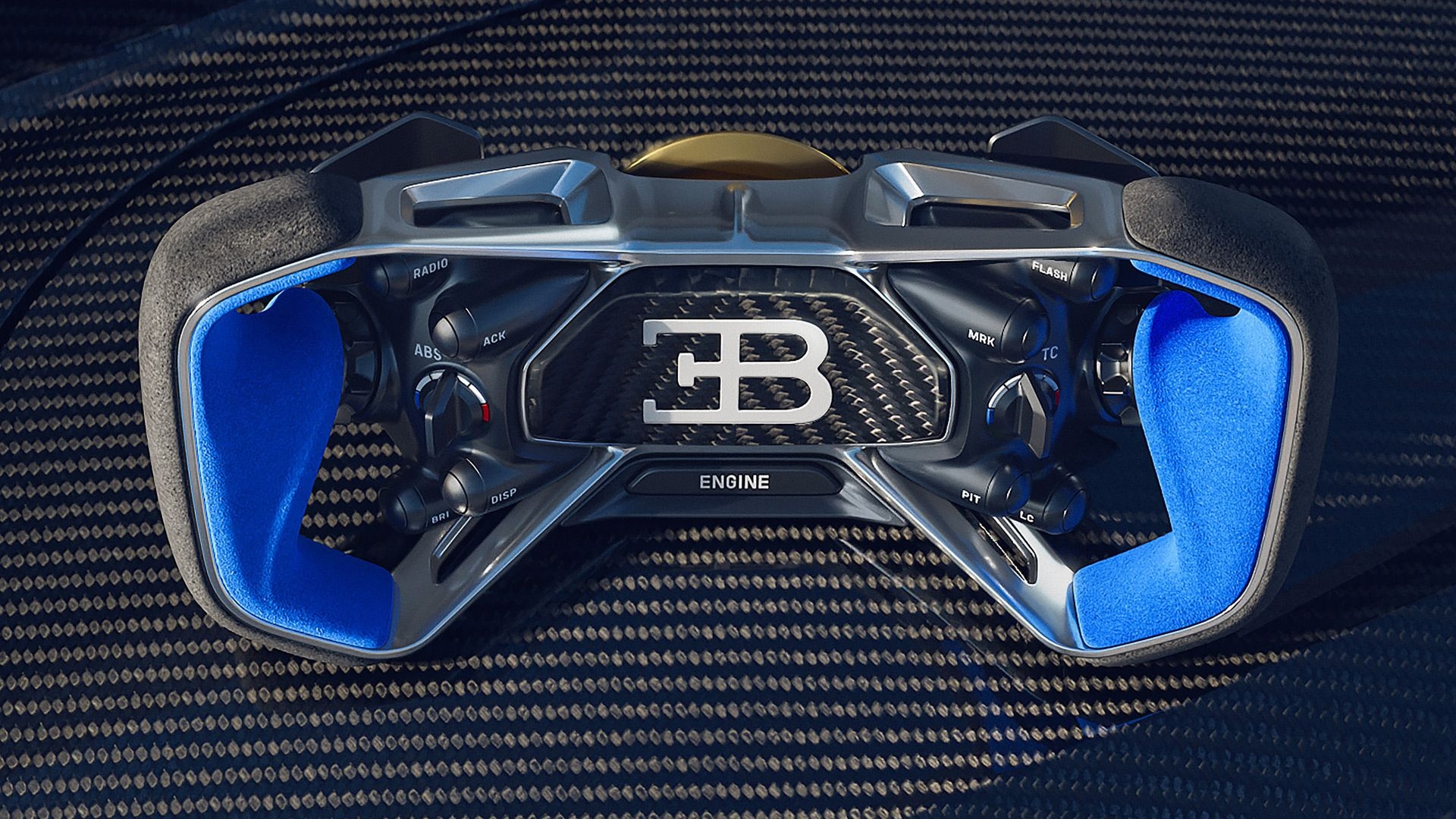Production of the Chiron will soon wind down, but Bugatti has two additional models waiting in the wings. One is the Mistral roadster that shares the Chiron's platform and serves as a sendoff for Bugatti's W-16 engine. The other is a wild track car completely unrelated to any existing Bugatti.
It's called the Bolide, and the car is shaping up to be very close to the original concept that was unveiled in 2020—and never intended for production. Bugatti has now revealed the design of the car's cabin, and it's even wilder than what was shown in the concept.
Most of the surfaces seem to wear carbon fiber, but the pieces actually are the exposed carbon-fiber tub underpinning the car. The tub is unique to the Bolide and has been developed to meet the same standards the FIA uses for top-level sports prototype cars such as those used in LMH and LMDh, according to Bugatti.
The new tub enabled Bugatti's designers to adjust the seating position compared to the Chiron, and the seats are much more reclined in the Bolide than in other Bugattis. The driver and passenger's feet sit higher, almost in line with the hip point as in a race car, and that enabled the design of the car to be kept very low. For maximum weight reduction, the seats are simply carbon-fiber shells with padded sections. The seats come in four sizes and are fixed to the tub. The driver is able to adjust the position of the steering wheel and pedals to suit.
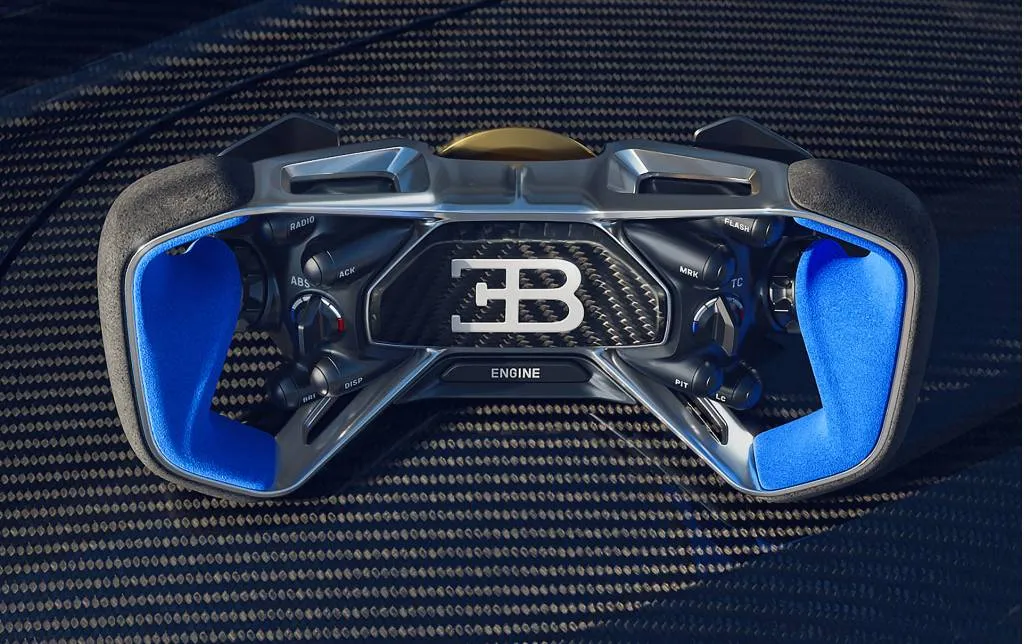
Bugatti Bolide
New elements not seen in the concept include an X-shaped steering wheel inspired by the X-design of the taillights. It features eight buttons plus two dials to control the settings of the ABS and traction control. The steering wheel alone looks like a piece of sculpture, and Bugatti intended it that way. It can even be unfastened, taken out of the cockpit, and placed on display when the Bolide is parked.
Behind the steering wheel is a curved panel with three individual digital displays. The driver can choose from two display modes. One features only the core data a racing driver would need out on the track, while the other features a greater level of information.
The design of the vents for the climate control system is also unique to the production model. It features four large pipes, two for the driver and two for the passenger, styled to match the layout of the exhaust tips and made from aluminum.
Safety features include a fire-suppression system, six-point harnesses, a HANS head-and-neck safety system, and headrests that mount to the door frames to form a structural component. The headrest brackets, made from 3D-printed aluminum, weigh just over half a pound each but can withstand a load of more than 1,500 pounds, Bugatti said.

Bugatti Bolide prototype
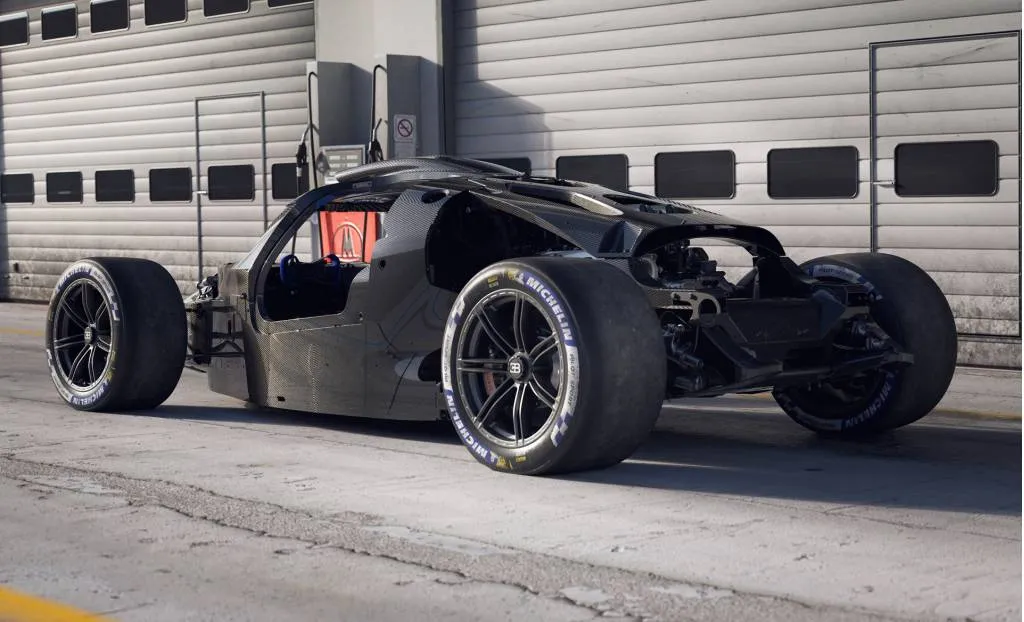
Bugatti Bolide rolling chassis
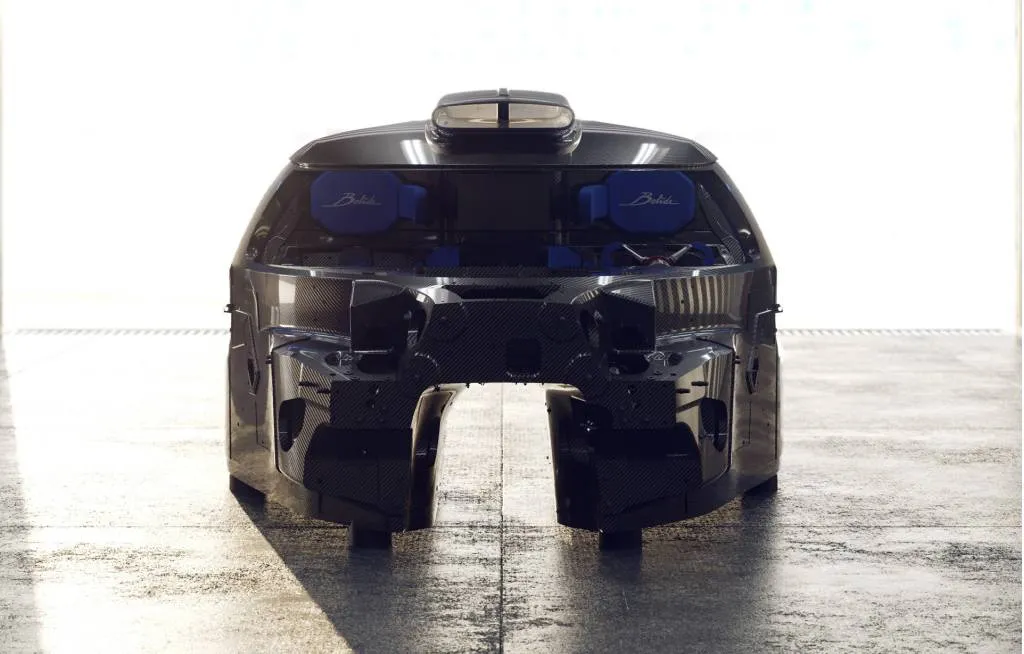
Bugatti Bolide rolling chassis
The Bolide also uses Bugatti's familiar quad-turbocharged 8.0-liter W-16, but here the engine is tuned to deliver 1,578 hp on 98-octane fuel. It can also run on 110-octane racing fuel, which ups the output to 1,824 hp. As the car is designed for track use, all four turbochargers are always in operation, and the engine has also been tuned to rev higher than in road-going Bugattis.
It is mated to an upgraded version of the 7-speed dual-clutch automatic found in the road cars and drives all four wheels.
The dry weight for the Bolide is a little under 3,200 pounds, and performance should be on par with top motorsports levels, according to Bugatti.
Bugatti will build a total 40 examples and all build slots are gone, despite the price of 4 million euros (approximately $4.3 million). Deliveries start in 2024.
